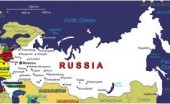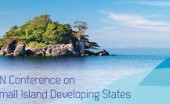Re Ian Bremmer 'Could third-party candidates upend the 2024 US election?' 3 April The current political movement in the USA…
India: Science & Technology
Written by Diana Thebaud Nicholson // December 8, 2009 // Aviation & Aerospace, Canada, India, Nuclear, Science & Technology, Trade & Tariffs // 1 Comment
Russia to supply India with nuclear reactors
International power companies from Russia, France, the UK, the US and Canada are flocking to India with the aim of helping one of the world’s fastest-growing economies meet its energy demands. The contribution of nuclear energy in India is forecast to rise from 4,000MW to as much as 470,000MW over the next 40 years.
29 November
Canada, India reach nuclear deal
Officials in Prime Minister Stephen Harper’s office say the agreement, which has been in the works since the summer, will allow Canadian firms to export and import “controlled” nuclear materials, equipment and technology to and from India. The deal, expected to be signed and implemented soon, has been controversial because Canada cut nuclear trade in 1974 after India used Canadian materials to manufacture its first nuclear weapon. Backgrounder
17 January 2009
N-deal with India: Canada beats US
Canadian Minister for International Trade Stockwell Day’s first visit to India assumes significance as he will meet Prime Minister Manmohan Singh [Images] to discuss civilian nuclear trade between the two countries.
Speaking to reporters via a teleconference call, Day said India is “anticipating the construction of over 30 to 40 nuclear plants over the next several years to produce clean energy. That’s a huge opportunity for Canada, on the technology side and the supply side.”
The Canadian minister has invited representatives from three top Canadian nuclear companies to accompany him. They include Atomic Energy of Canada Ltd, a Crown corporation responsible for building and sale of Candu nuclear reactors, SNC Lavalin Nuclear and Cameco Corp.
8 November 2008
Indian satellite captured by Moon
Further brakings will bring the Indian satellite down to a near-circular, 100km orbit from where it can begin its two-year mapping mission.
22 October
India chases China to moon with unmanned mission
SRIHARIKOTA, India (Reuters) – India launched its first unmanned moon mission on Wednesday, joining the Asian space race in the footsteps of rival China and reinforcing its claim to be considered a global power.
Chandrayaan-1 (moon vehicle), a cuboid spacecraft built by the Indian Space Research Organization (ISRO) blasted off from a southern Indian space center shortly after dawn in a boost for the country’s ambitions to gain more global space business.
The successful launch comes less than a fortnight after India closed a landmark nuclear energy cooperation deal with the United States, ending decades of isolation and making it a de facto nuclear power. The space operation is ostensibly about mapping the moon, but the mission comes on the heels of China’s first space walk last month.
India launches mission to moon to redraw maps
(IHT) Chief among the mission’s goals is mapping not only the surface of the moon, but what lies beneath. If successful, India will join what is shaping up as a 21st century space race with Chinese and Japanese crafts already in orbit around the moon. To date only the United States, Russia, the European Space Agency, Japan and China have sent missions to the moon.
3 October
International vendors flood India nuclear market
The U.S. is joining Russia, France and other nations in the multibillion-dollar bid to build out India’s nuclear market. India seeks to increase its nuclear power tenfold over the next 20 years. The Christian Science Monitor (10/3)
India and America complete, at last, a civil nuclear deal
(Economist) America’s Congress approved the country’s deal on civil nuclear co-operation with India, the last hurdle for a controversial agreement that gives India the privileges of a nuclear power without having signed the Nuclear Non-Proliferation Treaty. India and France signed a deal on co-operation in energy, paving the way for the sale of French nuclear reactors to India.
Three issues
Proponents of the deal argue, first of all, that it will vastly increase India’s energy supplies, removing a major bottleneck in the country’s economic development.
Supporters of the deal also argue that it will enhance India’s energy supply without boosting India’s nuclear-weapons programme—or, more generally, without permanently damaging international nuclear non-proliferation efforts.
The third source of support for the deal is that it is meant to be the centrepiece of a new strategic partnership between the US and India. Noting India’s uneasy relationship with a rising China, many US analysts see India as the geopolitical “swing state” of Asia.
10 March
Government’s gift to mothers
NEW DELHI: On the International Women’s Day, the government gave a unique gift to the fairer sex. The ministry of science and technology (S&T) will provide flexible working hours for women scientists having children up to the age of three. Besides, all department of S&T-aided institutions would also have the state-of-art crèche facility and separate residential blocks for women. The department will also provide loans to women to buy computers so that they can work from home.
“The endeavour is to provide a level-playing field to women scientists,” said minister for S&T Kapil Sibal. The move is based on recommendations of a task force set up to address problems of women scientists and suggest solutions to enable women scientists and technologists contribute more.
The minister announced that young women scientists who are associates of the Indian National Science Academy will be given a research grant of up to Rs10 lakh a year for a period of 5 years.
Speech of the President of India
“Participation of women in the dynamic field of science is central not only in our efforts for gender equality but also to make women stakeholders of the future construct of the world. Women scientists would bring into scientific research the instincts most commonly associated with women – to create, to nurture, to preserve and to work selflessly with dedication. I am glad that in the Science and Technology Policy of 2003, the Government of India has committed itself to promote the full and equal participation of women in all science and technological activities. I appreciate the steps taken by the Minister of Science and Technology and Earth Sciences to promote young scientist. This is an objective for which we must work incessantly.”
15 June 1998
How the nuclear ban bent for India
(Globe & Mail) Canada’s policy was clear: no co-operation. Friendly scientists and safety advice were something else.
Bombay – Before launching five nuclear tests last month, some of India’s top nuclear scientists visited Canada and met with their Canadian counterparts in what one Indian said was an unofficial attempt to break more than two decades of Canadian sanctions on nuclear co-operation. In interviews, several Indian scientists said that despite Ottawa’s restrictions, they were able to gain access to Canadian expertise over the past decade, mainly through old friends. In 1996, the head of India’s nuclear power program was allowed entry into two nuclear reactors in Ontario.




One Comment on "India: Science & Technology"
Surprisingly well-written and informative for a free online article.